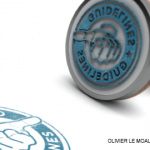ATLANTA—Therapeutic interventions that range from exercise to paraffin wax heat therapy may help many patients with hand, knee and hip osteoarthritis (OA) manage pain and improve function, according to a new clinical practice guideline due to be published online in Arthritis & Rheumatology and Arthritis Care & Research in late December or early January.1
Growing evidence supports numerous educational, behavioral, psychosocial and physical approaches to OA management, according to the guideline, which was co-sponsored by the ACR and the Arthritis Foundation. Investigators discussed the efficacy and safety of non-drug recommendations in the guideline, an update of the 2012 ACR recommendations, on Nov. 13 at the 2019 ACR/ARP Annual Meeting. Although several non-drug interventions received strong recommendations in the guideline, exercise had the most evidence to support its efficacy for patients with OA, including several large studies highlighted in the session.
7-Patient Panel Involved
The guideline was developed using the Grading of Recommendations Assessment, Development and Evaluation (GRADE) methodology, said Sharon Kolasinski, MD, professor of clinical medicine at the University of Pennsylvania Perelman School of Medicine, Philadelphia, who chaired the guideline’s core development team. Investigators used 536 published studies in the final evidence report. Input that reflects patient values and preferences was an important component of the development process, which included a seven-patient panel that met in August 2018. Two of those patients participated in the voting panel, which met in September 2018. Consensus agreement from at least 70% of voting panelists was required for recommendations to be included in the final report, said Dr. Kolasinski.
“Each intervention considered received either a strong or conditional recommendation. Strong recommendations for certain interventions suggest that there is compelling evidence of efficacy and that benefits clearly outweigh harms,” said Dr. Kolasinski. “In these cases, the voting panel was confident that desirable effects clearly outweigh harms and burdens to the patient. The suggestion is that a strong recommendation would apply to almost all patients.”
Exercise was the only intervention to receive a strong recommendation for use in all patients with OA. Strong recommendations against an intervention reflected panelists’ concerns about lack of efficacy and/or that its benefits may not outweigh harms, and conditional recommendations for a therapy reflected low- or very low-quality evidence to support its use.
‘It’s no surprise that exercise is a very strong recommendation. There is a large body of evidence to support exercise, & there is a wide range of options for patients.’ —Mr. White
Hand OA Recommendations
Exercise was a strong recommendation for hand osteoarthritis, said voting panelist Carole Dodge, OTRL, CHT, supervisor of the occupational therapy hand program, University of Michigan School of Medicine, Ann Arbor.2
“When we talk about osteoarthritis of the hand, we’re talking about specific joints, primarily the carpal metacarpal (CMC) joints of the thumb, the interphalangeal (IP) joints of the digits, especially where we see the Heberden’s and Bouchard’s node formation, and the carpals,” said Ms. Dodge. “So our exercises focus on these joints. We want to do range-of-motion exercises that help patients gain mobility in these joints, and we want to strengthen and stabilize the affected joints.”
Ms. Dodge shared examples of exercises to stabilize and strengthen these joints, including holding a tennis ball or squeezing it between the thumb and other digits, and using exercise putty to strengthen hand muscles. “Patients need at least 20 lbs. of grip strength for functional activities, like opening containers or pulling on boots, so we need to be sure we’re giving them the tools to reach those goals,” she said.
Conditional recommendations for hand OA include:
- Kinesiotaping of the CMC joints to improve grip and pinch strength;
- Orthotics, which include more flexible neoprene supports for CMC joints used during daytime activities and stiffer thermoplastic supports for joints to decrease pain at night during sleep, as well as ring orthoses that support individual digits;
- Gloves, primarily for comfort and pain management;
- Physical modalities, such as ice packs or warm paraffin wax baths that patients may use daily to increase flexibility before they perform hand exercises at home;
- Iontophoresis, a battery-powered pain relief patch used to target discomfort in specific small joints, which may be combined with the application of a small amount of topical dexamethasone;
- Manual therapy, including soft-tissue manipulation exercises that therapists can teach patients to perform on their hands at home;
- Massage therapy; and
- Acupuncture.
Ms. Dodge shared a case of an 81-year-old female patient who was diagnosed with erosive OA in her hands. She illustrated how both strong and conditional recommendations were used to improve the patient’s thumb and IP joint pain, and her CMC joint strength and stability: strengthening exercises, kinesiotaping, orthotics, gloves, a paraffin wax bath and manual therapy. In addition, her occupational therapy included behavioral adaptation.
“We taught her to use her palms when she engaged with her environment, and to lift with both hands and use her forearms when she lifted objects. She was able to integrate different techniques to lessen her pain, and that was our overall goal,” said Ms. Dodge.
Hip & Knee OA Recommendations
Exercise was the top recommendation for hip and knee OA, said voting panelist Daniel K. White, PT, ScD, MSc, assistant professor, Department of Physical Therapy at the University of Delaware, Newark, who urged audience members to stand up from their chairs and stretch.
“It’s no surprise that exercise is a very strong recommendation. There is a large body of evidence to support exercise, and there is a wide range of options for patients,” said Mr. White, who added that more evidence exists on exercise’s benefits for knees than hips. Walking is not only the most common exercise performed by active older adults, but highly beneficial at increasing overall physical activity.3,4
Evidence for the benefits of exercise includes a 2014 study that showed 6,000 steps a day, even performed in non-consecutive bouts of movement, can prevent functional limitation in people with knee OA.5 “If you walk in a purposeful manner, you will reach 100 steps per minute. That’s not a stroll, but it’s not a rush-to-the-bathroom pace either. It’s a comfortable walking pace that most people will reach, including people with knee osteoarthritis,” said Mr. White.
Muscle strengthening exercises of moderate or greater intensity should be performed at least twice a week by adults, according to the 2018 Physical Activity Guidelines, Second Edition.6 Rheumatologists should provide specific exercise recommendations to OA patients, including goals to reach, such as steps or walking minutes per day, Mr. White suggested.
Several strong recommendations for hip and knee OA in the new guideline were conditional in 2012: weight loss for overweight and obese patients; self-efficacy and self-management programs; mind-body interventions, such as tai chi; assistive and supportive devices; and tibiofemoral knee braces.7
Don’ts
For improved outcomes related to hip and knee OA, the new guideline includes conditional recommendations against modified shoes, lateral and medial wedged insoles, massage therapy, manual therapy with exercise and pulsed vibration therapy, and a strong recommendation against the use of transcutaneous electrical stimulation (TENS).
Susan Bernstein is a freelance journalist based in Atlanta.
References
- Hochberg MC, Altman RD, April KT, et al. American College of Rheumatology 2012 recommendations for the use of nonpharmacologic and pharmacologic therapies in osteoarthritis of the hand, hip, and knee. Arthritis Care Res. 2012 Apr;64(4):465–474.
- DeMott L. Novel isometric exercises for the dynamic stability programs for thumb carpal metacarpal joint instability. J Hand Ther. 2017 Jul–Sep;30(3):372–375.
- Yusuf HR, Croft JB, Giles WH, et al. Leisure-time physical activity among older adults: United States, 1990. Arch Intern Med. 1996 Jun 24;156(12):1321–1326.
- Bravata DM, Smith-Spangler C, Sundaram V, et al. Using pedometers to increase physical activity and improve health: A systematic review. JAMA. 2007 Nov 21;289(19):2296–2304.
- White DK, Tudor-Locke C, Zhang Y, et al. Daily walking and the risk of incident functional limitation in knee osteoarthritis: An observational study. Arthritis Care Res. 2014 Sep; 66(9):1328–1336.
- Physical Activity Guidelines for Americans, Second Edition. Washington, D.C.: U.S. Department of Health and Human Services; 2018
- Wang C, Schmid CH, Hibberd PL, et al. Tai chi is effective in treating knee osteoarthritis: A randomized controlled trial. Arthritis Rheum. 2009 Nov 15;61(11):1545–1553.




